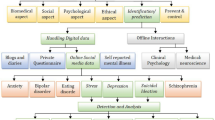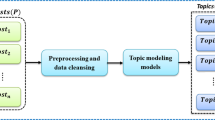Abstract
The spread of social networking sites (SNSs) has led to the development of news and its spread. In terms of momentum produced content and topics, the gathered data from online services like twitter, are from a wide range of areas. Finding an abnormality pattern as well as content oriented planning in society, is the reason why event analysis can be of great importance. Event, in social networking sites is an interesting happening in real world which causes discussion on the topic about related issues by the users of SNSs like twitter, and it is released immediately after the discussion or with a delay. Event, changes the amount of textual data, in a way that it presents related topics in a specific time period. This event is identified by time and topic, and is related with entities like people and places. The computations related to event detection in real time is a big problem in this context. A model based on deep learning is presented in this paper. Firstly, according to the labeled data, classes are formed through classification. Later, in a flow manner, unlabeled data are presented to the model. The unlabeled data are divided into the present classes according to the model which they have been trained. If the data are higher than an identified threshold, they are assigned to a new class, and when the data are lower than the threshold, they are categorized as temporary event. Innovation of the proposed method is in two issues. First, the data in this model are semi-supervised; therefore, the labeled data are used in the first phase and the rest of the data are used in the second phase. In HAN classification phase, a module titled bag of sentence was produced for exact classification of sentences, and in the second phase the abstract concept of Virtual backbone was used to enhance precision of multi label clustering. Adding these two sections using the proposed method enhanced the precision of classification and purification of the data in unlabeled data.





Similar content being viewed by others
References
Gaglio S, Re GL, Morana M (2016) A framework for real-time Twitter data analysis. Comput Commun 7:236–242
Petkos G, Papadopoulos S, Aiello L, Skraba R, Kompatsiaris Y (2014) A soft frequent pattern mining approach for textual topic detection. In: Proceedings of the 4th International Conference on Web IntelligenceMining and Semantics (WIMS14), 25–40
Mathioudakis M, Koudas N. Twittermonitor (2010) Trend detection over the twitter stream. In: Proceedings of the 2010 ACM SIGMOD International Conference on Management of data, 1155–1158.
Boom CD, Canneyt SV, Dhoedt B (2015) Semantics-driven event clustering in twitter feeds. In: Making Sense Of Microposts workshop, 1395: 2–9
Blei DM, Ng AY, Jordan MI (2003) Latent dirichlet allocation. J Mach Learn Res 3:993–1022
Aiello LM, Petkos G, Martin C, Corney D, Papadopoulos S, Skraba R, Göker A, Kompatsiaris I, Jaimes A (2013) Sensing trending topics in Twitter. In: IEEE Transactions on Multimedia, 15: 1268–1282
Stilo G, Velardi P (2016) Efficient temporal mining of micro-blog texts and its application to event discovery. Data Min Knowl Discov 30:372–402
Hasan M, Orgun MA, Schwitter R (2017) A survey on real-time event detection from the twitter data stream. Journal of Information Science
Hossny AH, Mitchell L (2019) Event detection in Twitter: a keyword volume approach
Schinas M, Papadopoulos S, Petkos G, Kompatsiaris Y, Mitkas PA (2015) Multimodal graph-based event detection and summarization in social media streams. In Proceedings of the 23rd ACM international conference on Multimedia (pp. 189–192)
Edouard A, Cabrio E, Tonelli S, Le Thanh N (2017) Graph-based event extraction from twitter. InRANLP17-Recent advances in natural language processing
Adedoyin-Olowe M, Gaber MM, Stahl F (2013) Trcm: a methodology for temporal analysis of evolving concepts in twitter In International Conference on Artificial Intelligence and Soft Computing (pp 135–145) Springer, Berlin
Adedoyin-Olowe M, Gaber MM, Dancausa CM, Stahl F, Gomes JB (2016) A rule dynamics approach to event detection in twitter with its application to sports and politics. Expert Syst Appl 15(55):351–360
Choi HJ, Park CH (2019) Emerging topic detection in twitter stream based on high utility pattern mining. Expert Syst Appl 1(115):27–36
Nguyen S, Ngo B, Vo C, Cao T (2019) Hot topic detection on twitter data streams with incremental clustering using named entities and central centroids. In2019 IEEE-RIVF International Conference on Computing and Communication Technologies (RIVF) 2019 (pp. 1–6). IEEE
Comito C, Forestiero A, Pizzuti C (2019) Bursty event detection in Twitter streams. ACM Trans Knowl Discov Data (TKDD) 13(4):1–28
Xing C, Wang Y, Liu J, Huang Y, Ma WY (2016) Hashtag-based sub-event discovery using mutually generative lda in twitter. In: Association for the Advancement of Artificial Intelligence, 2666–2672
Azzam A, Tazi N, Hossny A (2017) A question routing technique using deep neural network for communities of question answering In: database systems for advanced applications. Springer International Publishing, Berlin, pp 35–49
Azzam A, Tazi N, Hossny A (2017) Text-based question routing for question answering communities via deep learning. In Proceedings of the Symposium on Applied Computing, SAC ’17, New York, USA, ACM, pp. 1674–1678
Becker H, Naaman M, Gravano L (2011) Beyond trending topics: Real-world event identification on twitter. In Proceedings of the International AAAI Conference on Web and Social Media 5, 1
Osborne M, Moran S, McCreadie R, Von Lunen A, Sykora M, Cano E, Ireson N, Macdonald C, Ounis I, He Y, Jackson T (2014) Real-time detection, tracking, and monitoring of automatically discovered events in social media. In Proceedings of 52nd annual meeting of the association for computational linguistics: system demonstrations (pp. 37–42)
Petrović S, Osborne M, Lavrenko V (2010) Streaming first story detection with application to twitter. InHuman language technologies: The 2010 annual conference of the north american chapter of the association for computational linguistics (pp. 181–189)
Hasan M, Orgun MA, Schwitter R (2016) TwitterNews: real time event detection from the Twitter data stream. PeerJ PrePrints 4:e2297v1
Lee P, Lakshmanan LV, Milios EE (2014) Incremental cluster evolution tracking from highly dynamic network data. In 2014 IEEE 30th International Conference on Data Engineering (pp. 3–14). IEEE
Cheng X, Huang X, Li D, Wu W, Du DZ (2003) A polynomial-time approximation scheme for the minimum-connected dominating set in ad hoc wireless networks. Netw An Int J 42:202–208
Söderman M (2018) A study of hierarchical attention networks for text classification with an emphasis on biased news. LU-CS-EX 2018–21
Atefeh F, Khreich W (2015) A survey of techniques for event detection in twitter. Comput Intell 1:132–164
Osborne M, Moran S, McCreadie R et al. (2014) Real-time detection tracking. monitoring of automatically discovered events in social media. In: Proceedings of the 52nd annual meeting of the association for computational linguistics. Association for Computational Linguistics
McMinn AJ, Jose JM (2015) Real-time entity-based event detection for Twitter. In: Mothe J, Savoy J, Kamps J et al (eds) Experimental IR meets multilinguality, multimodality, and interaction: 6th international conference of the CLEF association (CLEF ’15). Springer, Berlin, pp 65–77
Griggs JR, Grinstead CM, Guichard DR (1988) The number of maximal independent sets in a connected graph. Discret Math 68:211–220
Johnson DS, Yannakakis M, Papadimitriou CH (1988) On generating all maximal independent sets. Inf Process Lett 27:119–123
Weng J, Lee BS (2011) Event detection in twitter. InFifth international AAAI conference on weblogs and social media
Cordeiro M (2012) Twitter event detection: combining wavelet analysis and topic inference summarization. In Doctoral symposium on informatics engineering, pp. 11–16
Weiler A, Grossniklaus M, Scholl MH (2016) An evaluation of the run-time and task-based performance of event detection techniques for Twitter. Inf Syst 62:207–219
Cui W, Wang P, Du Y, Chen X, Guo D, Li J, Zhou Y (2017) An algorithm for event detection based on social media data. Neurocomputing 254:53–58
Adedoyin-Olowe M, Gaber MM, Dancausa CM, Stahl F, Gomes JB (2016) A rule dynamics approach to event detection in twitter with its application to sports and politics. Expert Syst Appl 55:351–360
Nguyen DT, Jung JE (2017) Real-time event detection for online behavioral analysis of big social data. Futur Gener Comput Syst 66:137–145
Rezaei Z, Komleh HE, Eslami B (2019) Event detection in Twitter Big Data by virtual backbone deep learning. In International Congress on high-performance computing and Big Data Analysis. Springer, Cham, pp 18–31
Author information
Authors and Affiliations
Corresponding author
Additional information
Publisher's Note
Springer Nature remains neutral with regard to jurisdictional claims in published maps and institutional affiliations.
Rights and permissions
About this article
Cite this article
Rezaei, Z., Eslami, B., Amini, M.A. et al. Event detection in twitter by deep learning classification and multi label clustering virtual backbone formation. Evol. Intel. 16, 833–847 (2023). https://doi.org/10.1007/s12065-021-00696-6
Received:
Revised:
Accepted:
Published:
Issue Date:
DOI: https://doi.org/10.1007/s12065-021-00696-6




